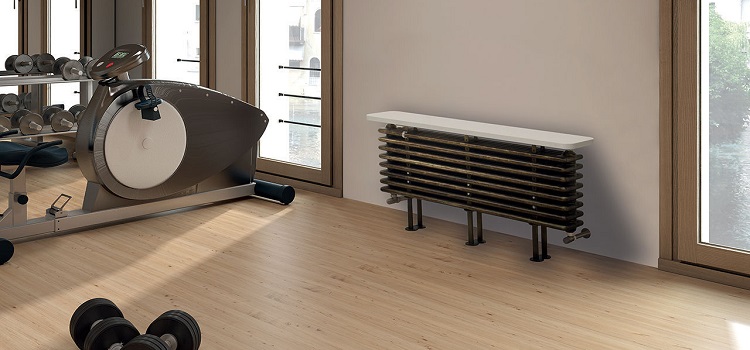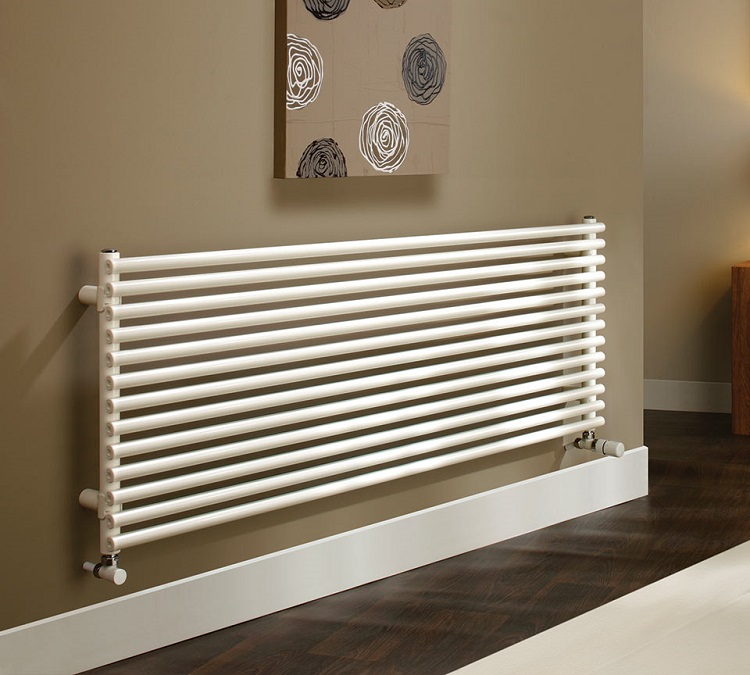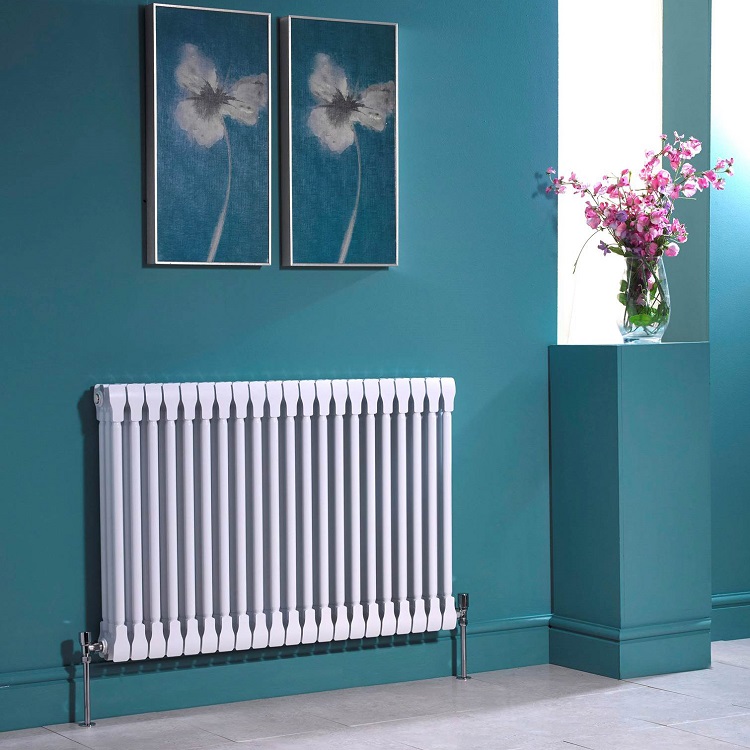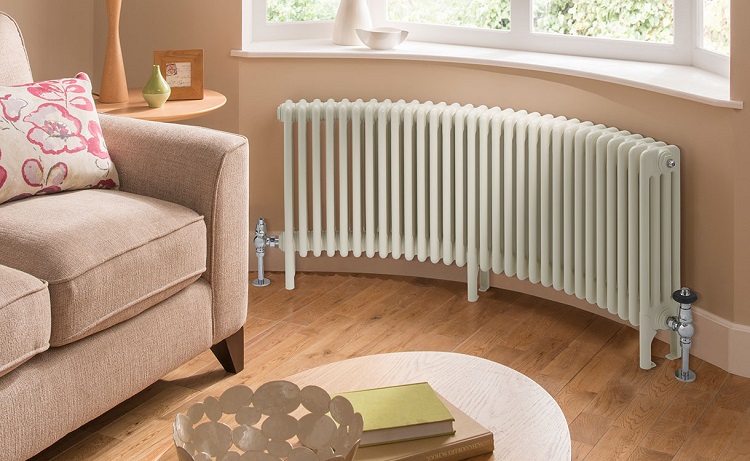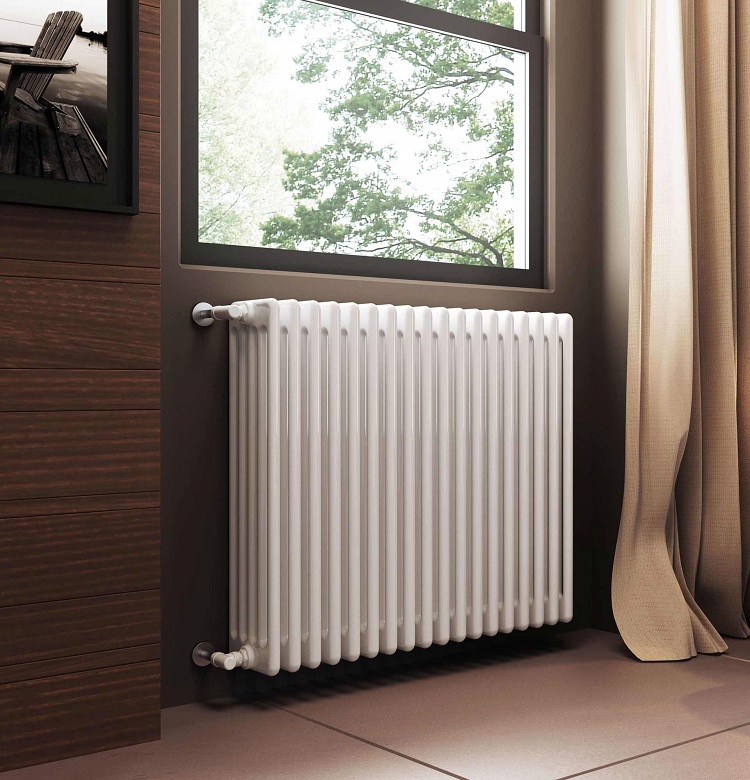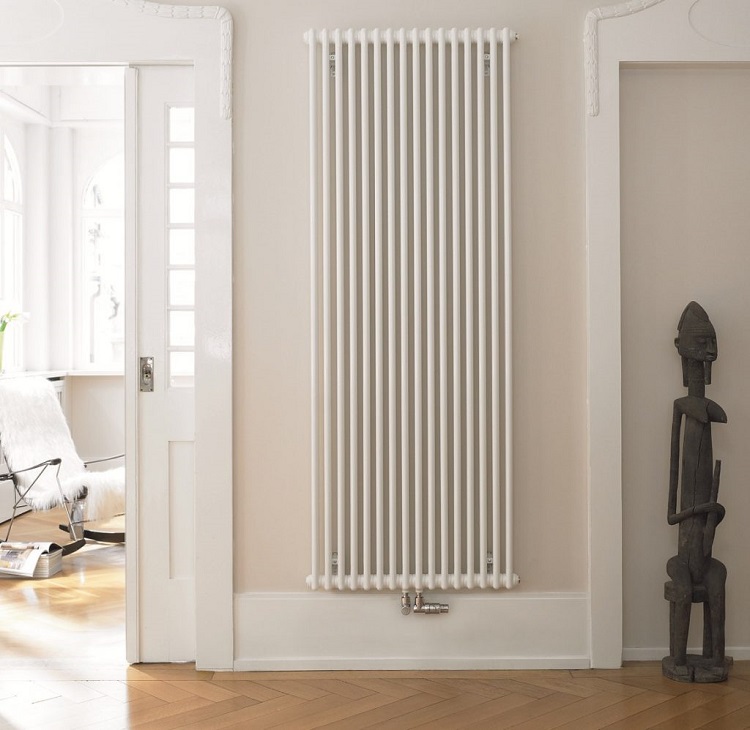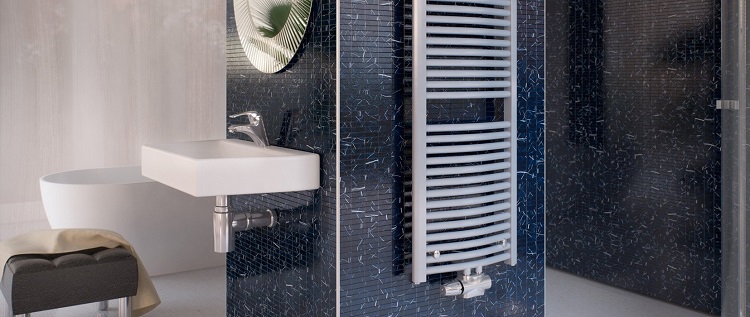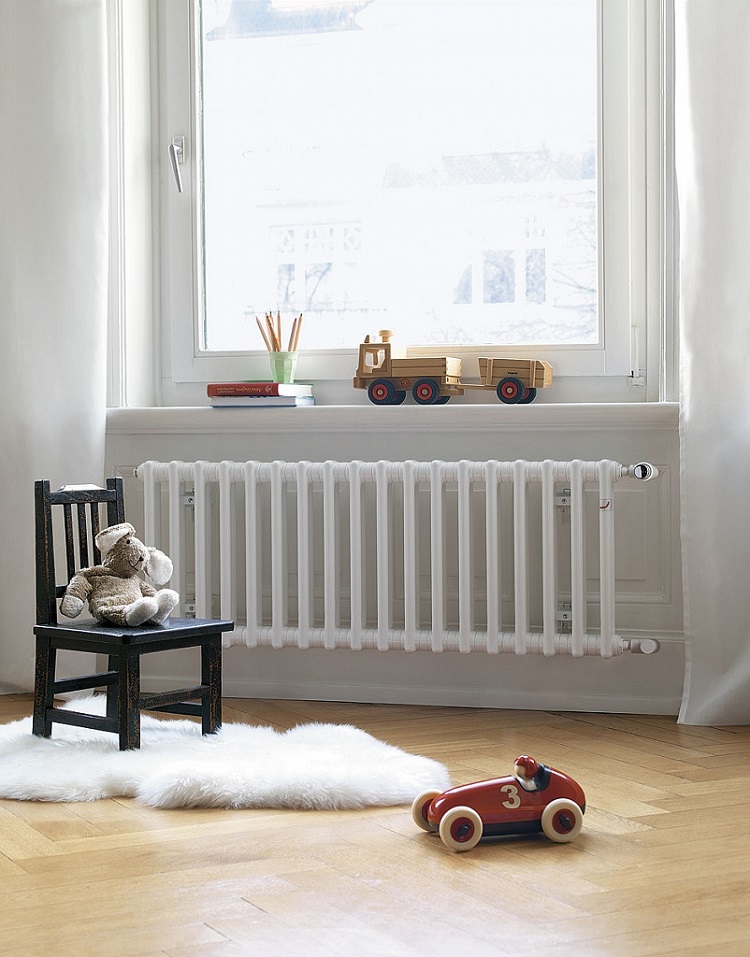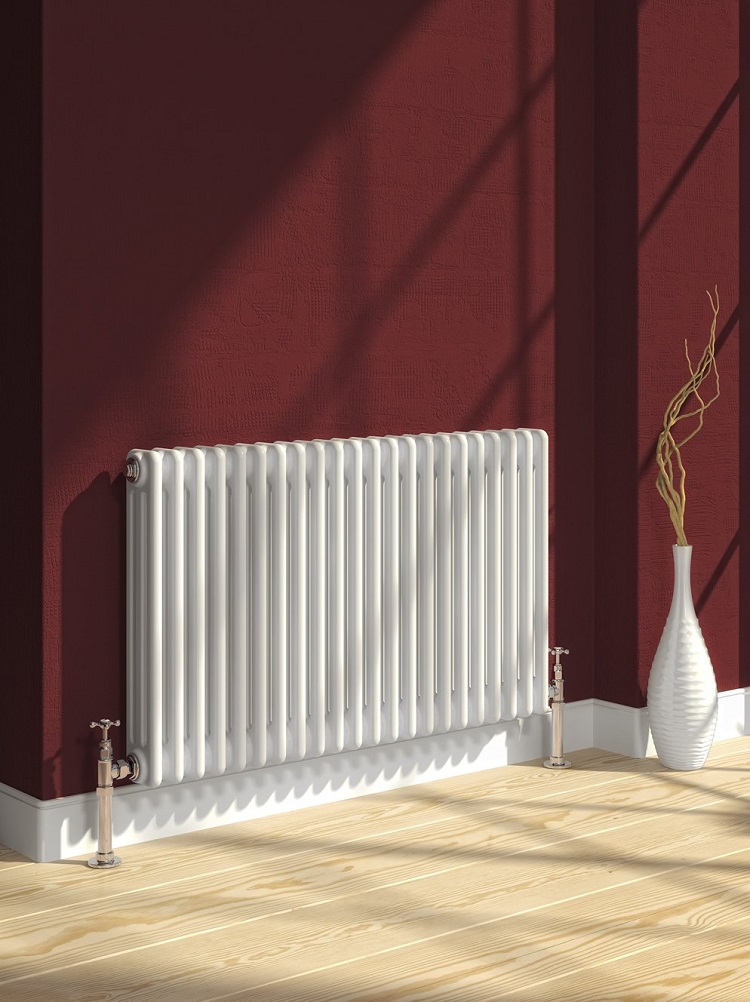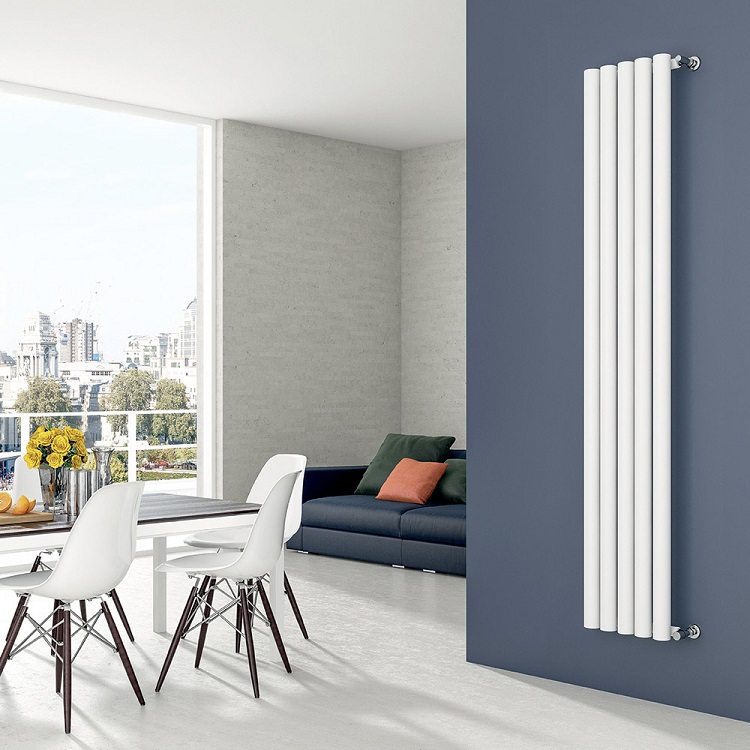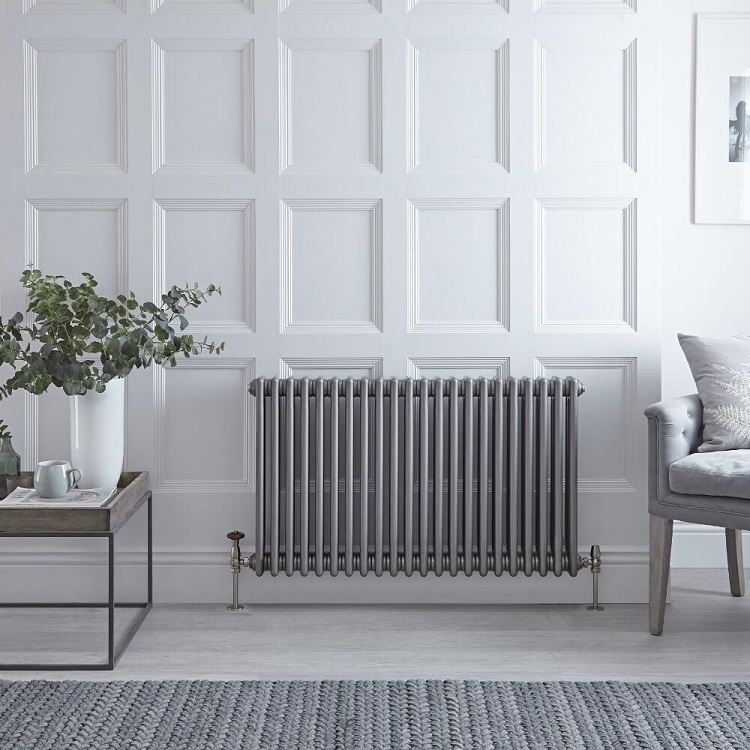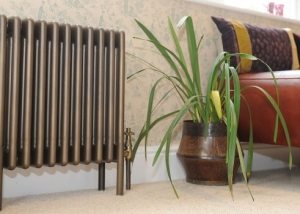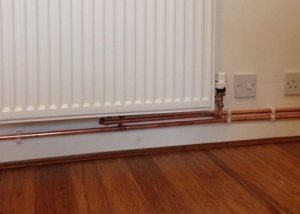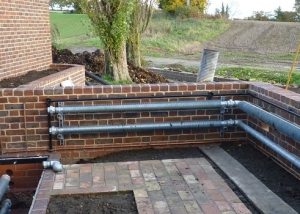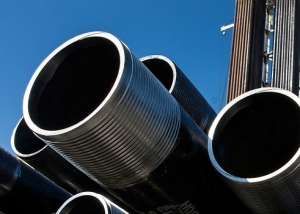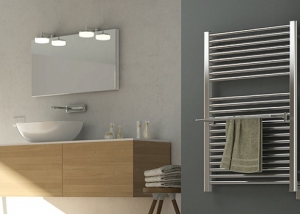Today, manufacturers offer a considerable selection of radiators from various metals and their combinations. A variety of models in traditional and unusual design solutions allow them to complement the interior of any style. But many ordinary people try to choose practical batteries, long-lasting, with good heat dissipation, relatively inexpensive, not requiring special care. Tubular radiators meet all these requirements, and at the same time are not quite ordinary, familiar to the eye models. That is why they are in demand in many countries.
Content
What are tubular radiators
The name of this type of battery speaks for itself - they are based on metal tubes connected by collectors. These tubes are heat-releasing elements, like fins in a cast-iron or plate in a bimetallic model. Welding is used to connect parts to each other. In the highest quality models, the seams are made using laser technology. This ensures reliability of the product.
They are made of different metals:
- Steel. The most common tubular batteries are made from steel billets. This material is able to withstand relatively high pressure (10-15 atm.), Small water hammer, is durable. In addition, such a surface is easy to clean from dust, and if desired, can be quickly updated by applying a fresh coat of paint.
- Copper. Tubular radiators made of this metal are not common, since they are quite expensive in comparison with steel and are not so resistant to pressure drops.
- Bimetal. In this embodiment, the battery has the form of steel tubes enclosed in an aluminum housing.
- Aluminum. Rare, not very popular specimens, suitable only for houses with autonomous heating with low pressure in the system.
The shape of the radiators can be any - from standard straight models to fancifully curved, the tubes can be arranged vertically or horizontally, their length also varies.
Note! The calculation of the number of sections of a non-standard (for example, arcuate) radiator for a certain room is best left to professionals.
The advantages of tubular models
Heating devices of this type have more advantages than disadvantages, but the latter also need to be taken into account. The pros include:
- Simple yet robust design. Welds guarantee no leaks.
- Ease of installation. Radiators are lightweight, do not require special skills for connection.
- Increased corrosion resistance. There are also models with a polymer coating of the inner surface. Such batteries are preferable to install in apartment buildings, where the quality of the coolant leaves much to be desired.
- Increased heat dissipation. This indicator for tubular radiators is higher than for any other models.
- Resistance to high pressure. These devices work without problems at 10-15 atm. This makes it possible to install them in apartment buildings - up to 9-10 floors high.
- Large selection of models.Design features allow you to choose a radiator for a room of any shape and size.
- Safety. There are no sharp corners in the design, so they can be installed in any room, including in children's rooms.
Of the minuses, it is worth noting:
- Fairly high cost of design options.
- The inability to install in homes with high floors, where the pressure exceeds 10 atmospheres.
- Models with thin welds (mainly for exclusive designer looks) do not differ in resistance to water shocks, therefore it is recommended to install them only where there is individual heating with low pressure.
Varieties and characteristics of tubular batteries
Tubular radiators are vertical and horizontal. The latter are installed under the windows, on the walls. The cross section of the tubes of horizontal batteries can be oval, round, triangular looks especially advantageous. Depending on the layout and area of the room, such a radiator may have different heights. Currently, it has become fashionable to make large windows in houses, so low radiators are most popular - up to 57 cm (as a rule, these are 3 sections). Moreover, it can be quite wide, at the request of the customer this parameter can be increased to 2 meters.
Tubular vertical radiators are divided into:
- Sectional. The simplest option, consisting of a set of segments of the same size and diameter.
- Diagonal. The length of the tubes is different - a smooth transition from the longest to the shortest segment. Such batteries look original, especially when placed in niches.
- Colon-shaped. They consist of tubes of the same size and diameter, reminiscent of ordinary cast-iron radiators.
- Radius Such models may have the shape of an arc, the best option for a semicircular room.
In addition, the vertical arrangement of the tubes is the best solution for rooms with panoramic, or simply very large windows (from floor to ceiling), as well as in such rooms where it is not possible to install the battery in the window sill. High radiators, consisting of several thin tubes, can be mounted parallel to the window on both sides of it.
There are also models with a minimum height, in the form of benches. Such products are practical and convenient for changing rooms in sports centers, for example, or child care facilities. Models with a vertical arrangement of tubes require minimal maintenance, since they practically do not accumulate dust.
Such batteries are available not only in the usual white color. You can find on sale or order a variant of any color, including pearl shades, bronze, silver and gold, aged metal and wood.
For the bathroom, you can choose a model with a crossbar for hanging towels. Such a radiator will serve as a heated towel rail.
The main technical characteristics of tubular batteries are as follows:
- height - from 30 to 300 cm;
- depth - approximately 225 mm;
- the distance between the sections is 45-65 mm. Long distance models are installed in public places (schools, hospitals) where strict hygiene standards must be observed;
- tube wall thickness - models imported from Western countries differ in small wall thickness - 1-1.5 mm, in domestic copies this figure is higher - up to 2 mm;
- section section. The standard shape of the tubes is round, its cross section does not exceed 25 mm. Oval, square and other pipe shapes are less common.
Installation and connection of tubular radiators
Tubular batteries can be operated in closed, open type networks with forced and natural circulation of the coolant. They are suitable for single pipe systems.You can connect them in any of the ways:
- diagonal
- lower;
- lateral.
With a lower connection, both the supply and return are connected to the radiator from below. With a lateral supply and outlet pipes are mounted on the side - on the right or on the left. The diagonal way is that the feed is connected from the top right (for example), and the return flow is from the bottom left.
Note! Many models are equipped with a set of parts for connection. When purchasing a product with fittings, you should make sure that their diameter matches the diameter of the pipes of your heating system.
Such radiators are mounted on brackets that are attached to the walls with dowels. It can be installed on walls made of different materials - concrete, brick, aerated concrete. Due to their light weight, you can fix them on drywall, only with the help of special brackets.
If you plan to install in an apartment building, first you need to familiarize yourself with the technical parameters of the product and make sure that it is able to work for a long time at a certain load.
Basic conditions for proper installation:
- the distance between the windowsill and the upper edge of the radiator (horizontal) - 5-10 cm;
- between the floor and the lower rib - 9-12 cm;
- the distance between the wall and the radiator is 2-5 cm. If a reflective layer is installed, this gap must be increased.
What does the heating equipment market offer?
Today you can find radiators in stores in the Czech Republic, Poland, Germany, Italy, Finland, China, Russia. All of them differ in price, reliability, characteristics.
| Producing country | Popular brands | Features |
| Italy | Royal thermo | High quality and decorativeness, reliability, rather high cost |
| Finland | Purmo | Reasonable prices, high quality, excellent design. The ability to order a custom model. |
| Germany | Zehnder, Arbonia, Kermi | The highest quality, diverse design, reasonable price for domestic buyers. |
| Poland | Termica | The main specialization is tubular bimetallic products, affordable. |
| Czech Republic | Isan atol | Good quality, reasonable prices, the presence of built-in thermostatic valves in most models. |
| China | Oasis | Budget options, adaptability to Russian working conditions, good heat dissipation |
| Russia | Harmony, Loten Gray | Affordable cost, high quality, a variety of models |
Note! Russian-made products can last at least 25 years. The service life of imported models, provided they are installed in our central heating systems, can be much shorter - about 15 years. This is due to the composition of the coolant.
Not always domestic means poor quality. The developments of Russian enterprises are also quite worthy competitors to foreign models. For example, “Harmony” tubular radiators are manufactured using a unique technology: the steel sections of the battery are tubes with thick walls and a “double” bottom - that is, the “pipe in pipe” principle is used. This significantly increases the reliability and service life of products, in addition, they differ from their analogues in higher heat transfer, and the cost is quite affordable for the average consumer.
Italian and German brands stand out among European companies, but they are much more expensive than ours. In addition, if the customer needs a color other than standard white, you will have to pay even more: for example, the popular brands Kermi and Arbonia (Germany) supply colored products from their catalog at a price 20% (at least) higher than usual.
What to choose when choosing
The selection of the heating battery must be based on certain criteria. The main ones are:
- The area of the room.The larger the room, the more sections (pipes) the radiator should have. As a rule, the power of the device is indicated in its passport. Based on these data, the required number of sections is calculated.
- Sectional shape of pipes in radiators.
- Pipe diameter. The larger it is, the higher the heat transfer.
- Manufacturer. It is important that the model is adapted for use in Russian conditions. In this regard, experts advise to pay attention to domestic samples.
- The presence of anti-corrosion coating inside the device. Poor heat transfer agent can quickly lead to the destruction of steel radiator.
- Media Temperature Domestic "Harmony" is able to withstand up to 130 degrees, Purmo brand products - 120, while German Kermi - 110 degrees.
The guarantee that the manufacturer gives on his products is also important. As a rule, well-known brands guarantee the perfect operation of their devices for 10 years.
Tubular radiators are a modern, practical solution for homes, offices, apartments. They are distinguished by reliability, durability, ease of installation and maintenance. With their help, you can solve the issue of heating in any room, even the most unusual form.
